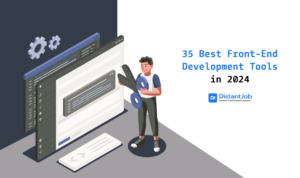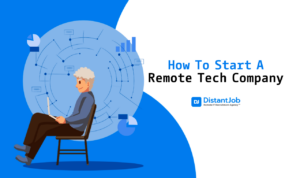If there is one group of professionals that need to pay special attention to ergonomics, that would be programmers. I would know- I used to be a frontend developer, sitting in front of the computer up to 12 hours daily before deciding to quit for health reasons.
According to a wide ranging study on IT professionals in India, over 50% of those surveyed had lower back pain. Neck pain was second, followed by other MSD such as shoulder and wrist pain. Yes, it’s a health landmine out there for us programmers.
Don’t want to become a part of these statistics? Start with the following ergonomic tips geared towards the modern day programmer.
1. Ensure your Laptop Screen is at Eye Level
As a programmer, staring into the screen until the rooster crows is practically part of the M.O. And that does a number on your neck over time. Statistics show that neck pain is the 4th leading cause of disability worldwide, with 30% of sufferers developing chronic symptoms that may sideline their careers and lives.
Increasingly, programmers are working remotely out of coffee shops or coworking spaces, relying on the laptop as their main driver. Laptops are great for mobility, but absolutely brutal on your neck and shoulders.
One of the things that makes laptops inherently unergonomic is the low height of the screen due to it being attached to the keyboard. On most surfaces, it means you’re forced to always stare downwards when viewing a laptop screen. And that’s bad. Very bad.
According to spine surgeon Dr. Kenneth Hansraj, even a 15° forward tilt of the neck can double the weight felt by your neck. This means that over time, this position can not only cause you neck and back pain, but affect your posture as well.
Fortunately, there are two easy fixes that you can choose from.
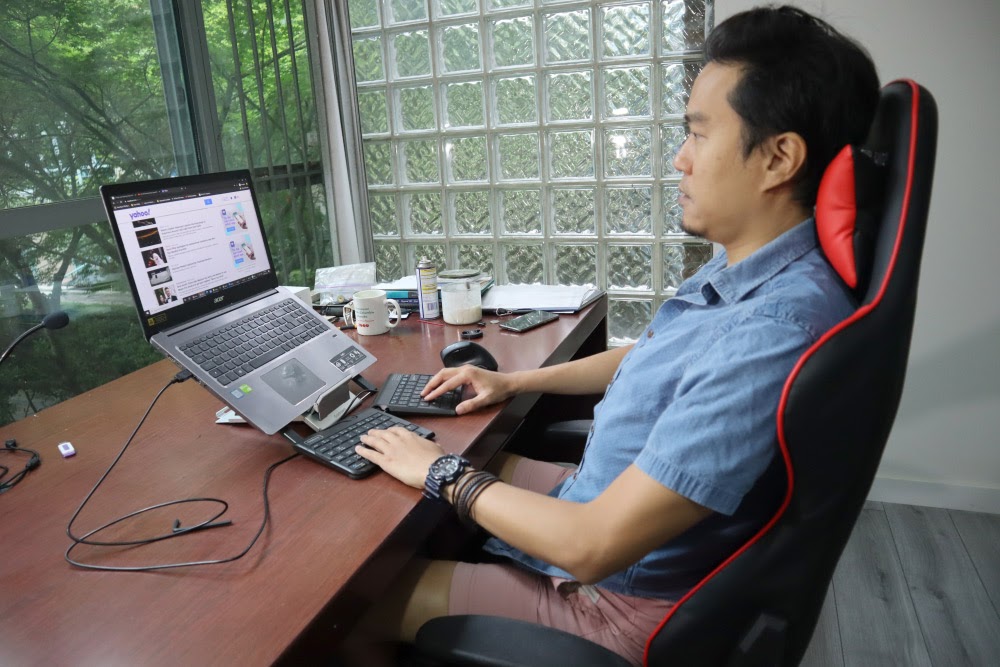
- Laptop Stand – Your first and cheaper option is to get a laptop stand that will elevate your laptop screen to eye level. Prices start at $20 with more expensive models available depending on your workstation set up. Of course, since the keyboard will also be elevated along with the screen, using an external keyboard is a must.
- External Monitor – If you’re at home, alway try to hook your laptop up to a height adjustable external monitor. One is fine, though two is even better. As a programmer, the larger screens will boost your productivity by making it easier for you to multitask, make detailed edits, and copy and paste. In both setups, make sure the monitors are around an arm’s length away, and the top line of the monitor is adjusted to eye level.
Did You Know? According to a Jon Peddie research, having multiple displays can increase your productivity by up to 42%. So, not only are you protecting your health by connecting your laptop to dual external monitors, you’re also getting more work done!
2. Check your Wrist for Flexion or Extension
Every programmer relies on a keyboard to code, which unfortunately is another common source of ergonomic pain.
When you type, you’re more likely than not putting your wrists in one of the following two positions:
- Extension – An upward bend of the wrist towards the posterior section of your forearm.
- Flexion – The opposite of extension wherein your wrist is in a downward bend. It often occurs when you place your laptop on your lap with your arms elevated on your chair’s armrests.
What happens when your wrists are flexed or extended for long periods of time? You put yourself at a high risk of developing work-related musculoskeletal disorders like carpal tunnel syndrome (CTS) and tendonitis.
Musculoskeletal disorders (MSD) are injuries affecting the muscles, nerves, tendons, joints, and cartilage. CTS and tendonitis can both be caused by sustained flexion and extension. However, CTS affects the median nerve while tendonitis affects the tendons of the wrist.
The ideal working station will keep your wrist at a neutral position. No flexion, no extension. The forearm to wrist alignment is straight.
To help better achieve a neutral wrist when typing, follow the below guidelines:
- The keyboard should be flat on the desk or slightly tilting away from you.
- Place your keyboard at just under elbow height.
- Avoid using the back legs of conventional keyboards as this creates a positive tilt that causes wrist extension.
- Adjust your seat height and armrests to put your arms at the same plane as your keyboard.
Did You Know? Carpal Tunnel Syndrome accounts for 32.5% of all work-related repetitive strain injuries, with the 35 to 44 age group being most susceptible to CTS.
3. Practice Neutral Sitting for your Back
Not all sitting positions are equal. Some are a lot easier on your back, which in ergonomics we loosely call neutral sitting.
A neutral sitting position is one that preserves the three natural curves of the spine and puts the least amount of strain on your back, allowing you to work pain-free longer.
For programmers that often feel their back ache after a long coding session, I suggest experimenting with the following neutral sitting postures:
- Reclined Sitting – Characterized by a backward-angled trunk, this position has the upper body supported by the backrest and the chest and hips open. It has the lowest back muscle activity so back fatigue is minimized. Look for chairs with synchro tilt for a more comfortable sitting experience in the reclined position.
- Declined Sitting – According to A.C. Mandal, declined sitting can greatly reduce the fatigue in the lower back by shifting some of the weight on the thighs. Your back should be straight, arms resting on the desk, and thighs inclined with your buttocks higher than your knees. Not a lot of office chairs support forward tilting so your best options are kneeling chairs and saddle chairs.
- Supine Sitting – Research says that laying flat is the least stressful on the spine because most of the body is supported. However, this horizontal working position requires either investing on a supine computing workstation or busting out your DIY skills.
Did You Know? According to the Occupational Requirements Survey 2016, developers spend 90% of their working hours sitting. This is the highest among the survey’s selected occupations.
4. Code Standing Up from Time to Time
Even the most “ideal” sitting posture inhibits blood circulation and puts undue stress on the spine over time. And for programmers that sit a lot, that’s asking for trouble down the road.
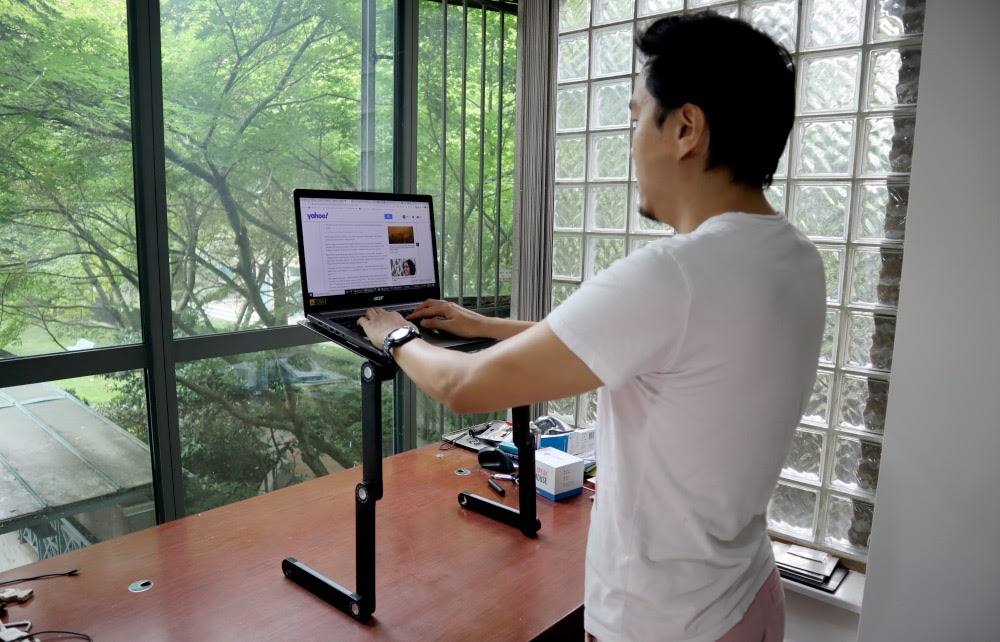
This is where standing comes in. As another neutral position, standing takes the load off your spine and improves blood circulation to your lower extremities.
Of course, this doesn’t mean that you should quit cold turkey on your sitting addiction. In fact, according to the University of Waterloo, the sweet spot is a sit-stand ratio of 1:1 to 1:3. This means that for every 15 minutes of sitting, you should stand for 15 to 45 minutes.
Did You Know? One study found that up to 54% experienced a decrease in neck and lower back pain when they alternated between sitting and standing.
To facilitate the sit/ stand routine, consider the following:
- Use a cheap cardboard standing desk or a monitor riser to raise your monitor and keyboard to the proper height when standing while working. Even in this position, don’t forget to put your monitor at eye level and your external keyboard at a height where a neutral wrist position can be maintained.
- Let your body get adjusted to this new routine first by starting slow and gradually working your way up to the ideal sit-stand ratio.
5. Stretch at Least Once an Hour
Employee productivity tracking software DeskTime analyzed 5.5 million daily records of office workers and found that the top 10% most productive workers worked an average of 52 minutes followed by 17 break minutes.
While resting might seem like a waste of your precious time, what I’ve found is that it actually helps get more work done, by “resetting” the brain and recharging the body periodically. Other benefits of stretching at work include:
- Reduced fatigue thanks to better blood circulation
- MSD prevention
- Improved posture
- Better muscle coordination and balance
You can try the stretches below to get you started on your healthy breaks.
1. Fist to Fan

The fist to fan stretch strengthens the hand and forearm muscles while also improving finger dexterity. It’s a great, easy stretch that will release the stress and rejuvenate your hands and finger in between long hours of coding.
- Close your hands tightly in a fist.
- Pop your hands open.
- Spread your fingers out as much as you can.
- Repeat 10 times.
2. Standing Back Bend Stretch

This pose will loosen up your tight lower back muscles and boost your cardiovascular, digestive, and respiratory systems.
- Stand upright with your feet slightly apart.
- Place your palms on your lower back with your fingers pointing down.
- Press down with your feet, pull your knees up, and squeeze your thighs and buttocks.
- Roll back your shoulders and arch your back as much as you can. Use your hands to support your weight.
- Lift your chin up to look at the ceiling.
- Hold the pose for 5 seconds.
- Return to your starting position by taking a deep breath to lift your torso, neck, then head.
- Do this 2 to 3 times.
3. Seated Pigeon Twist
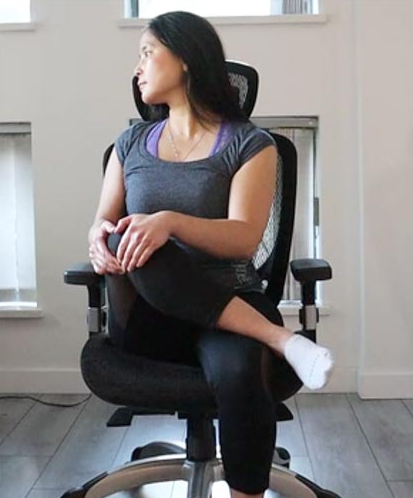
Sitting for hours can tighten your hips. This stretch counters this by improving the flexibility of your hips.
- Sit on a chair with your right ankle over your left knee.
- Using both hands grab your right knee and gently pull it towards you
- Take a deep breath and twist your upper body to the right while looking in the same direction
- Slowly return to your starting position.
- Repeat on the other side.
There are plenty of other desk stretches you can do if you need more ideas.
Coding for the Long Term
As a former programmer, one thing I regret the most was not paying enough attention to my health. Things as simple as paying attention to your posture, taking periodic breaks and moving your body frequently can go a long way in preventing the type of chronic injuries that can force you to change careers.
P.S. If you consider yourself a code lover and are currently seeking for a job opportunity, contact us! We’d love to help you.
As a remote recruiting agency, we have more than 10 years connecting talented developers with companies wanting to hire top international tech talent.

